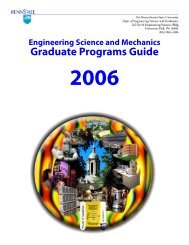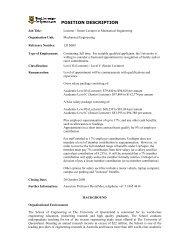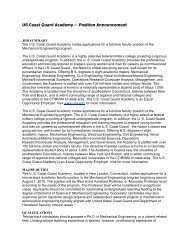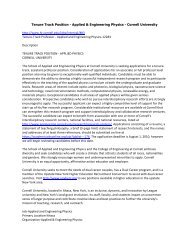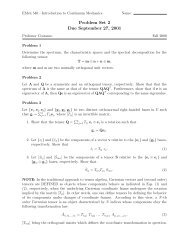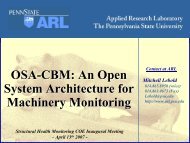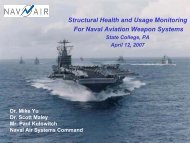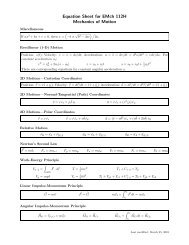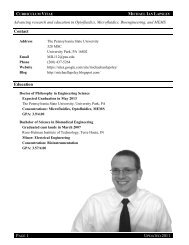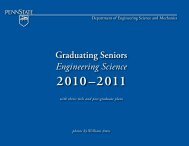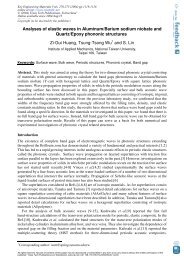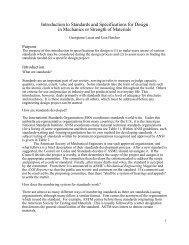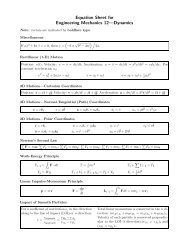Miniaturisation for chemistry, physics, biology, & bioengineering
Miniaturisation for chemistry, physics, biology, & bioengineering
Miniaturisation for chemistry, physics, biology, & bioengineering
Create successful ePaper yourself
Turn your PDF publications into a flip-book with our unique Google optimized e-Paper software.
Fig. 4 Theoretical analyses. (a) Size dependence of acoustic <strong>for</strong>ce (AF), viscous <strong>for</strong>ce (VF), buoyant <strong>for</strong>ce, and gravitational <strong>for</strong>ce. (b), Dependence of<br />
AF and VF on the working wavelength <strong>for</strong> different objects. (c) The distribution of trapping <strong>for</strong>ce around a pressure node (PN). The <strong>for</strong>ces on beads and<br />
E. coli are magnified 10 times <strong>for</strong> clear visualization. The inset indicates the <strong>for</strong>ce vectors and equal <strong>for</strong>ce contours around the PN. The SAW wavelength<br />
was 100 mm. (d) Calculated and experimental patterning time. The SAW intensity was 2000 W m 2 , and the particles speed was 1 mm s 1 in VF<br />
calculation.<br />
overcome the maximum acoustic <strong>for</strong>ce in the field (25 pN <strong>for</strong><br />
bRBC). By increasing the operation power or reducing the SAW<br />
working wavelength, one can further increase the stiffness of the<br />
trapping well built by the acoustic <strong>for</strong>ces gradient around<br />
the pressure nodes or antinodes, making it possible to manipulate<br />
and pattern nanoscale particles. 35,42,44–47,49 In addition, our<br />
experimental and calculated results (Fig. 4d) show that the<br />
process <strong>for</strong> patterning polystyrene beads and bRBC takes less<br />
than 3 s, a speed faster than those of the previously reported<br />
studies. 12,17,18,25 Detailed description of the theoretical model<br />
used in Fig. 4 can be found in the ESI.†<br />
In conclusion, we have demonstrated a SSAW-based ‘‘acoustic<br />
tweezers’’ technique that enables one to actively pattern cells and<br />
microparticles. This technique does not require pre-treatments<br />
on the substrates or cells/microparticles. It is applicable to<br />
virtually any type of cell/microparticle regardless of size, shape,<br />
or electrical/magnetic/optical properties. We verified this versatility<br />
by patterning polystyrene beads, bRBC, and E. coli cells.<br />
The required power intensity of acoustic tweezers (2000 W m 2 )<br />
is 5 10 5 times lower than that of optical tweezers (10 9 Wm 2 )<br />
and compares favorably to those of other patterning<br />
methods. 12,23 Such a low power intensity also contributes to the<br />
technique’s non-invasive nature, as confirmed by our cell<br />
viability studies. With its advantages in versatility, miniaturization,<br />
power consumption, speed, and technical simplicity, our<br />
‘‘acoustic tweezers’’ technique is a powerful tool <strong>for</strong> applications<br />
such as tissue engineering, microarray, cell studies, and drug<br />
screening and discovery.<br />
Acknowledgements<br />
We thank Dr Bernhard R. Tittmann, Dr Kenji Uchino, Subash<br />
Jayaraman and Seyit Ural <strong>for</strong> help with equipments, and Yanjun<br />
Liu and Thomas R. Walker <strong>for</strong> helpful discussion. This research<br />
was supported by National Science Foundation (ECCS-0824183,<br />
ECCS-0801922, and ECCS-0609128) and the Penn State Center<br />
<strong>for</strong> Nanoscale Science (MRSEC). Components of this work were<br />
conducted at the Penn State node of the NSF-funded National<br />
Nanotechnology Infrastructure Network.<br />
References<br />
1 C. J. Flaim, S. Chien and S. N. Bhatia, Nat. Methods, 2005, 2,<br />
119–125.<br />
2 D. B. Wheeler, A. E. Carpenter and D. M. Sabatini, Nat. Genet., 2005,<br />
37, S25–S30.<br />
3 M. M. Stevens, M. Mayer, D. G. Anderson, D. B. Weibel,<br />
G. M. Whitesides and R. Langer, Biomaterials, 2005, 26, 7636–7641.<br />
4 A. Tourovskaia, X. Figueroa-Masot and A. Folch, Lab Chip, 2005, 5,<br />
14–19.<br />
5 C. Smith, Nature, 2007, 446, 219–222.<br />
6 S. R. Khetani and S. N. Bhatia, Nat. Biotechnol., 2007, 26, 120–126.<br />
7 A. Hernard and et al, Langmuir, 1998, 14, 2225–2229.<br />
8 E. S. Douglas, R. A. Chandra, C. R. Bertozzi, R. A. Mathies and<br />
M. B. Francis, Lab Chip, 2007, 7, 1442–1448.<br />
2894 | Lab Chip, 2009, 9, 2890–2895 This journal is ª The Royal Society of Chemistry 2009



